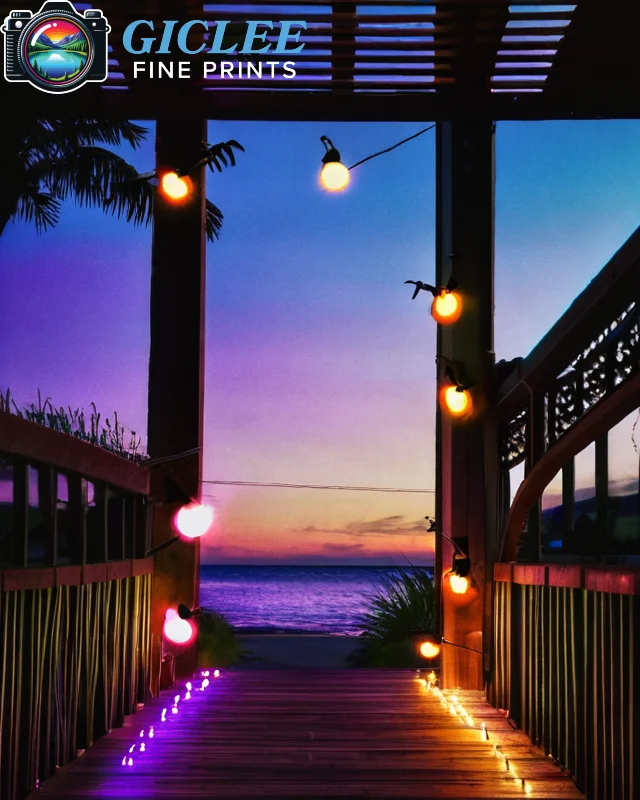
For artists aiming to elevate their work, producing gallery-quality prints can open up new opportunities for showcasing their art. High-quality prints capture the fine details, vibrant colors, and unique textures that make each piece stand out. At Giclee Fine Prints, we offer various premium options—canvas, fine art paper, metal prints, and peel and sticks for walls—allowing artists to craft pieces that look stunning in any gallery or personal space.
Selecting the Right Printing Material
The choice of material is fundamental to achieving a gallery-quality finish. Each material has unique characteristics that can highlight different aspects of the artwork:
- Canvas: Adds texture and depth, giving artwork a classic and timeless look. Canvas is ideal for paintings and bold, colorful pieces.
- Fine Art Paper: Offers a smooth surface that captures intricate details and is perfect for photography and detailed illustrations.
- Metal Prints: Provides a modern, glossy finish with vibrant colors that pop, ideal for contemporary art and high-contrast images.
- Peel and Sticks for Walls: A versatile option, peel and sticks are great for repositionable wall art that retains high-quality detail without permanent installation.
Choosing the right material allows artists to tailor the final print’s texture and presentation, enhancing its visual impact.

Ensure High-Resolution Files
Resolution is key to a print’s quality. High-resolution files (at least 300 DPI) ensure that details remain sharp, preventing pixelation or blurriness, especially in large formats like canvas or metal prints. For intricate pieces, using even higher DPI can produce prints with exceptional clarity, ensuring every brushstroke, line, and color transition is beautifully rendered.
Pay Attention to Color Calibration
Color accuracy is crucial for artists who want their prints to reflect the true colors of their original work. Calibrate your monitor regularly and use ICC profiles specific to your printer and material. ICC profiles adjust colors according to the type of paper or canvas used, giving a more accurate preview of the final print. For vibrant or intricate pieces, accurate color calibration makes a big difference in achieving gallery-quality results.

Consider Finishing Options
Finishing touches like protective coatings can elevate the quality of a print and increase its longevity. UV-resistant coatings can prevent fading, especially for canvas and fine art paper prints displayed in areas with natural light. For a glossy, contemporary look, a high-gloss finish on metal prints can make colors appear more vivid. Finishes not only enhance aesthetics but also offer added protection, ensuring the print maintains its quality over time.
Test Small Sections Before Final Prints
For large or complex pieces, test printing a small section allows you to see how colors, textures, and finishes translate to your chosen material. This approach can prevent costly mistakes and help ensure that the final print matches your vision. Test prints are particularly helpful when using new materials like peel and stick options, allowing you to fine-tune brightness, contrast, and color accuracy.
Why Choose Giclee Fine Prints for Gallery-Quality Results?
At Giclee Fine Prints, we understand the importance of precision and quality in every print. Our expertise with premium materials and advanced printing techniques ensures that your artwork is presented beautifully, whether on canvas, fine art paper, metal, or peel and stick for walls. Let us help you create prints that capture the essence of your art and stand out in any space.
Contact Us
Our address is: 3816 Pioneer Trail Ste #3, South Lake Tahoe, CA 96150
Email: Info@gicleefineprints.com
FAQs
It depends on the artwork’s style. Canvas offers a classic look, fine art paper is excellent for detail, metal prints provide a modern glossy finish, and peel and stick options are great for repositionable wall art.
High resolution ensures sharp details and prevents pixelation, which is essential for large prints and maintaining the artwork’s integrity.
Calibrate your monitor and use ICC profiles specific to your printer and chosen material. This helps match print colors closely to the digital file.


